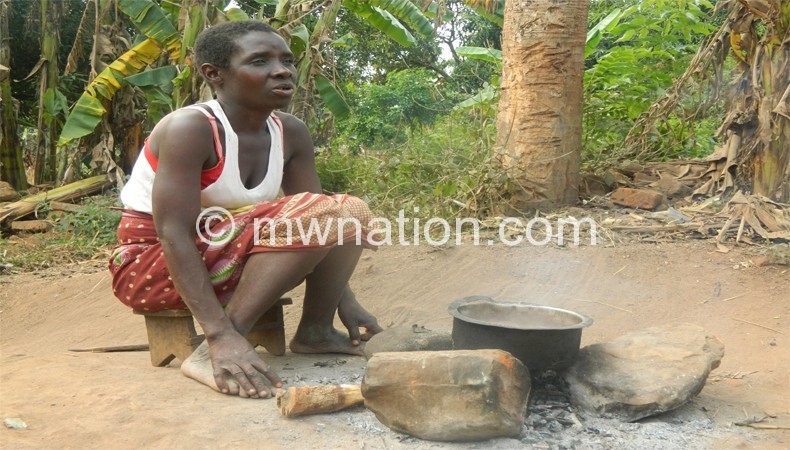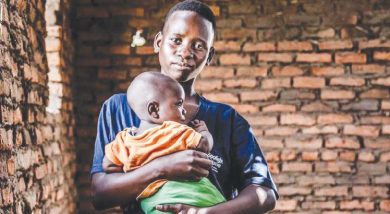April 2015 will remain a painful month to Christina Phiri of Mwanandi Village traditional authority (T/A) Kapichi in Thyolo. It is the time she lost her uterus due to birth complications following delayed reproductive health treatment.
Her pain began three days after she delivered a still-born baby at Khonjeni Health Centre.
She recalls: “I was feeling pain below my navel. I felt like a razor was piercing through my intestines. At first, I thought it was normal, but slowly, the pain got worse that I decided to go back to the facility.”

Doctors at the hospital could not scan her due to lack of equipment. They referred her to Thyolo District Hospital, but she had to find her own means to travel the 25-kilometre journey.
The health centre, she says, has no ambulance and relies on one that operates from the district hospital.
Phiri explains: “The doctor said there was no fuel at Thyolo hospital to send an ambulance to pick me. They gave me a referral letter and told me to get my own transport.”
But Phiri, who is single and lives on piece work at farms, says she could not afford the transport. Travelling to Thyolo by pick-ups costs K900 ($2) while by bicycle it is K1 200 ($3).
It took her church members a week to take her to a private clinic, where after scanning, doctors said she had delayed and recommended that her uterus be removed because it was damaged and was a risk to her life.
The lack of K4 000 ($9) cost her uterus.
Phiri’s case mirrors the situation at the health centre. Despite government preaching success in improving maternal health, the story on the ground is on the contrary. Most health centres have no capacity to support the population with basic services. This, in turn contributes largely to maternal mortality.
Access to these health centres is a challenge. They are scattered. It is not uncommon for pregnant women to walk over 10 kilometres to access maternal services. Those with serious complications and need to be referred somewhere, suffer the most in meeting the costs of getting to the referral hospitals. Most health centres lack ambulances and share the one based at the district hospital, which is not usually available due to fuel or high demand.
Pregnant women still walk long distances to access maternal services. For instance, pregnant women in Sandama and Makapwa in Thyolo walk over 15 kilometres to Khonjeni. They pay between K500 and K1 000 to travel by bicycle to the facility.
The 2014 Human Development Index (HDI) report says 61.64 percent of Malawians live on less than $1 (K446) a day. This, therefore, makes it hard for most women to go the distance.
US-based health expert and blogger, Carine Ronsman, argues in her article titled Martenal Mortality and Disability and Their Consequencies: Neglected Agenda in Maternal Health that walking long distances during pregnancy is dangerous and can lead to serious pregnancy complications such as premature labour, death and disability of either or both the mother and the unborn.
Khonjeni serves an average of 30 000 people and in a week around 25 live births are registered. These are attended to by three nurses, one of whom is on transfer, meaning two nurses will be responsible for this population as no new nurses are on their way.
The centre registered 10 maternal deaths—three still births and seven neonatal deaths—since January.
Moses Chandamale, medical assistant and in-charge of the health centre, says most mothers deaths are registered outside the facility because they refer all serious cases and therefore have no records.
Equipment is a challenge. The centre cannot handle pregnancy complications. There are no beds and patients sleep on the floor. Sanitation facilities are inadequate and during the night doctors use torches and lamps for lighting.
The maternal mortality rate at Khonjeni gives a national picture. Health Minister Jean Kalilani revealed during the recent review meeting of the Health Sector Wide Approach that 328 mothers are dying in six months due to birth complications. Government statistics also show that maternal mortality still stands at 510 per 100 000 live births.
It is such revelations that hit a last nail on Malawi’s dream to achieve the Millennium Development Goals (MDGs) goal number five—improving maternal health and universal access to reproductive health. Malawi will not meet the mortality rate of 155 per 100 000 live births target by the December deadline.
Paradoxically, this happens against several interventions that government has been implementing to promote safe motherhood since 2000. Among many others, government intensified construction of health centres to reduce the radius people walk to access health service, constructing waiting shelters to stop deliveries at Traditional Birth Attendants (TBAs), running mobile clinics, providing bicycle ambulances and improving equity and efficiency in the delivery of quality health package (EHP) services.
Martha Kwataine, Malawi Health Equity Network (Mhen) executive director, observes that these initiatives are good, but lack of focus, concentration and consistency with the changes of government have derailed their success.
This is testified by the fact that despite planning to rehabilitate 825 health centres during the last budget, by June government had done only 20 percent of the work according to draft estimates.
Kwataine describes this as worrisome, particularly that some complications that continue to take away lives of women and children such as severe bleeding, womb infection, high blood pressure during pregnancy can be detected, prevented and treated during antenatal visits.
“Malawi knows what should be done. None can refute that,” argues Kwataine.





